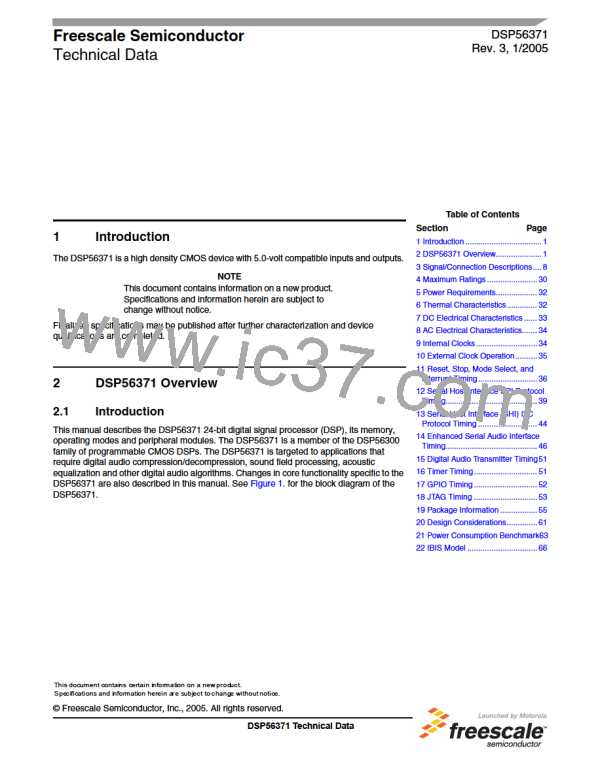Design Considerations
20
Design Considerations
20.1
Thermal Design Considerations
An estimation of the chip junction temperature, TJ, in °C can be obtained from the following equation:
T
= T + (P × R
)
J
A
D
θJA
Where:TA
=
=
=
ambient temperature °C
package junction-to-ambient thermal resistance °C/W
power dissipation in package W
RqJA
PD
Historically, thermal resistance has been expressed as the sum of a junction-to-case thermal resistance and a case-to-ambient
thermal resistance.
R
= R
+ R
θJA
θJC
θCA
Where:RθJA
RθJC
=
=
=
package junction-to-ambient thermal resistance °C/W
package junction-to-case thermal resistance °C/W
package case-to-ambient thermal resistance °C/W
RθCA
RθJC is device-related and cannot be influenced by the user. The user controls the thermal environment to change the case-to-
ambient thermal resistance, RθCA. For example, the user can change the air flow around the device, add a heat sink, change the
mounting arrangement on the printed circuit board (PCB), or otherwise change the thermal dissipation capability of the area
surrounding the device on a PCB. This model is most useful for ceramic packages with heat sinks; some 90% of the heat flow is
dissipated through the case to the heat sink and out to the ambient environment. For ceramic packages, in situations where the
heat flow is split between a path to the case and an alternate path through the PCB, analysis of the device thermal performance
may need the additional modeling capability of a system level thermal simulation tool.
The thermal performance of plastic packages is more dependent on the temperature of the PCB to which the package is
mounted. Again, if the estimations obtained from RθJA do not satisfactorily answer whether the thermal performance is adequate,
a system level model may be appropriate.
A complicating factor is the existence of three common ways for determining the junction-to-case thermal resistance in plastic
packages.
•
•
•
To minimize temperature variation across the surface, the thermal resistance is measured from the junction to the
outside surface of the package (case) closest to the chip mounting area when that surface has a proper heat sink.
To define a value approximately equal to a junction-to-board thermal resistance, the thermal resistance is measured
from the junction to where the leads are attached to the case.
If the temperature of the package case (TT) is determined by a thermocouple, the thermal resistance is computed using
the value obtained by the equation
(TJ – TT)/PD.
As noted above, the junction-to-case thermal resistances quoted in this data sheet are determined using the first definition. From
a practical standpoint, that value is also suitable for determining the junction temperature from a case thermocouple reading in
forced convection environments. In natural convection, using the junction-to-case thermal resistance to estimate junction
temperature from a thermocouple reading on the case of the package will estimate a junction temperature slightly hotter than
actual temperature. Hence, the new thermal metric, thermal characterization parameter or ΨJT, has been defined to be (TJ –
TT)/PD. This value gives a better estimate of the junction temperature in natural convection when using the surface temperature
of the package. Remember that surface temperature readings of packages are subject to significant errors caused by inadequate
attachment of the sensor to the surface and to errors caused by heat loss to the sensor. The recommended technique is to attach
a 40-gauge thermocouple wire and bead to the top center of the package with thermally conductive epoxy.
Freescale Semiconductor
DSP56371 Technical Data
61

 FREESCALE [ Freescale ]
FREESCALE [ Freescale ]